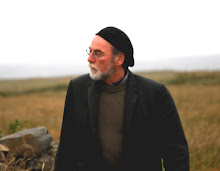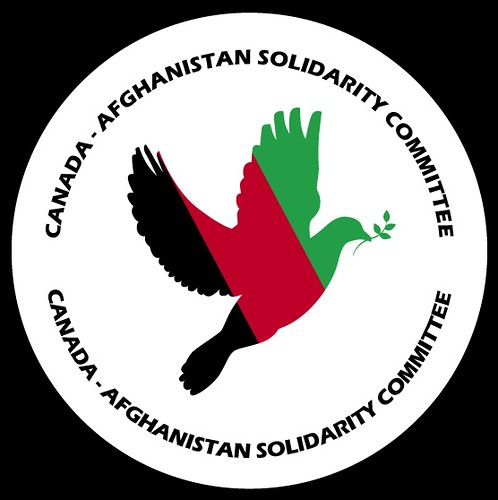At best, a slightly lunatic mediocrity.
At her worst, Margaret Thatcher was bloody-minded, incompetent, sadistic and vindictive, as I point out in the Ottawa Citizen today. And nowhere was her brutishness more a menace to decency and peace than in Ireland.
I admit, it's kind of personal. My late dad was a leading figure in the Irish Prisoner of War Committee here in Canada during the 1980-81 hunger strikes over which Maggie so ghoulishly presided. It probably skews things a bit too that I happen to have been named after Terence MacSwiney, who died on the 75th day of his hunger strike in Brixton Prison in 1920. But on the occasion of Baroness Thatcher's death, it seems to me these names should be remembered as well:
Bobby Sands, died May 5 1981, after 66 days on hunger strike. Francis Hughes died May 12, after 59 days. Raymond McCreesh, May 21, 61 days. Patsy O'Hara died May 21, 61 days. Joe McDonnell, July 8, 61 days. Martin Hurson, July 13, 46 days. Kevin Lynch, August 1, 71 days. Kieran Doherty, August 2, 73 days. Thomas McElwee, August 8, 62 days. Michael Devine, August 20, 60 days.
The complete list of names is rather long. This one is only for "our" crowd.
Generally speaking, I'd say Doug Saunders at the Globe and Mail has it pretty well right.
Timothy Lavin from the Bloomberg View editorial board asks the Irish question directly: So what had Thatcher's 'steely resolve' accomplished?
Most visibly, it boosted Republican terrorism. Violent deaths related to the conflict rose to 101 in 1981 from 76 the year before, including 44 members of the security forces. Injuries rose to 1,350 from 801. Shootings increased to 1,142 from 642, and bombings reached nearly 400 that year. Far from demonstrating that the IRA's struggle was a lost one, Thatcher only intensified its opposition to rule by what it considered an ever more brutal occupying force. The horrific campaign would culminate in the IRA's attempted assassination of Thatcher herself at the Conservative Party Conference in 1984. The prime minister narrowly escaped, but five others were killed.
The other significant consequence of Thatcher's unyielding position was that public sympathy for the hunger strikers quickly morphed into political support for Republicanism. Bobby Sands, one of the strikers, was elected to the British House of Commons for Fermanagh-South Tyrone while imprisoned. His victory "undermined the entire shaky edifice of British policy in Northern Ireland, which had been so painfully constructed on the hypothesis that blame for the 'Troubles' could be placed on a small gang of thugs and hoodlums who enjoyed no community support," wrote David Beresford in "Ten Men Dead."
Here's how stupid Thatcher's Irish policy was.
In 1988, angry about the extent to which the long-suffering British people (whose own island was subjected to a calamitous, grotesque and bloody IRA bombing campaign) were becoming sympathetic to the cause of Irish republicanism in Ulster, Thatcher ordered restrictions on the news media of the most comical kind.
Thatcher couldn't prevented British journalists from interviewing Sinn Fein or IRA leaders, but broadcast laws could be monkeyed with to prevent "terrorist voices" from disturbing the gentle eardrums of the English people. In force until 1994, the media restrictions obliged the BBC to strip the sound tape from television reports and interviews and hire actors to repeat the words of the republican interview subjects, to be overdubbed onto the video tape. Imagine watching that sort of routine absurdity on the nightly news, year in and year out.
While I'm not a Sinn Feiner of any description, it seems a proper tribute to the 1988-94 media restrictions that we link directly to Sinn Fein TV, to let Gerry Adams have the last word:
The other significant consequence of Thatcher's unyielding position was that public sympathy for the hunger strikers quickly morphed into political support for Republicanism. Bobby Sands, one of the strikers, was elected to the British House of Commons for Fermanagh-South Tyrone while imprisoned. His victory "undermined the entire shaky edifice of British policy in Northern Ireland, which had been so painfully constructed on the hypothesis that blame for the 'Troubles' could be placed on a small gang of thugs and hoodlums who enjoyed no community support," wrote David Beresford in "Ten Men Dead."
Here's how stupid Thatcher's Irish policy was.
In 1988, angry about the extent to which the long-suffering British people (whose own island was subjected to a calamitous, grotesque and bloody IRA bombing campaign) were becoming sympathetic to the cause of Irish republicanism in Ulster, Thatcher ordered restrictions on the news media of the most comical kind.
Thatcher couldn't prevented British journalists from interviewing Sinn Fein or IRA leaders, but broadcast laws could be monkeyed with to prevent "terrorist voices" from disturbing the gentle eardrums of the English people. In force until 1994, the media restrictions obliged the BBC to strip the sound tape from television reports and interviews and hire actors to repeat the words of the republican interview subjects, to be overdubbed onto the video tape. Imagine watching that sort of routine absurdity on the nightly news, year in and year out.
While I'm not a Sinn Feiner of any description, it seems a proper tribute to the 1988-94 media restrictions that we link directly to Sinn Fein TV, to let Gerry Adams have the last word:





4 Comments:
Where do we stop with names, Terry? If we're going to list dead hunger strikers, are we also going to list the names of those they killed before they were sent to prison? For example those killed by Raymond McCreesh and his comrades?
From the Belfast Newsletter via Slugger O'Toole:
In 1977 McCreesh was convicted of attempted murder, conspiracy to murder, possession of firearms with intent to endanger life and PIRA membership. He died on hunger strike in 1981. Last year the PSNI Historical Enquiries Team linked him, along with two others, to a string of IRA murders committed with the Armalite he was caught with, including the Kingsmills massacre in 1976.
In that attack 10 Protestant workmen were stopped on their way home from work and gunned down. An eleventh man survived.
The Armalite McCreesh was arrested with was also linked by HET to:
l the murders of RUC Constable David McNeice and rifleman Michael Gibson (Royal Jackets) at an ambush at Meigh in 1974;
l the attempted murder of Protestant farmer Samuel Rodgers at Camlough in 1975;
l the attack on a military helicopter and attempted murder of security force personnel at Carrickbroad, Forkhill, in 1976;
l the attempted murder of security force personnel at Mountain House, Belleek, Newry, in 1976, where the Armalite was recovered.
Wikipedia's account of the Kingsmill massacre includes the names of the dead:
On 5 January 1976 just after 5.30 pm, a red Ford Transit minibus was carrying sixteen textile workers home from work in Glenanne to Bessbrook. Five were Catholics and eleven were Protestants. Four of the Catholics got out at Whitecross, while the rest continued on the road to Bessbrook. As the bus cleared the rise of a hill, it was stopped by a man in British Army uniform standing on the road and flashing a torch. The workers assumed they were being stopped and searched by the British Army. As the bus stopped, eleven masked gunmen with blackened faces and wearing combat jackets emerged from the hedges. A man "with a pronounced English accent" then began talking. He ordered them to line-up beside the bus and then asked "Who is the Catholic?". The only Catholic was Richard Hughes. His workmates—now fearing that the gunmen were loyalists who had come to kill him—tried to stop him from identifying himself. However, when Hughes stepped forward the gunman told him to "Get down the road and don't look back". The lead gunman then said "Right" and the other armed men immediately opened fire on the workers.
The remaining eleven men were shot at very close range with AR-18 and L1A1 SLR rifles, a 9mm pistol, and an M1 carbine. A total of 136 rounds were fired in less than a minute. The dead and wounded men's bodies fell on top of each other. When the shooting stopped, one of the gunmen walked amongst the dying men and shot each of them in the head as they lay on the ground. Ten of them died at the scene; John Bryans, Robert Chambers, Reginald Chapman, Walter Chapman, Robert Freeburn, Joseph Lemmon, John McConville, James McWhirter, Robert Walker and Kenneth Worton. Alan Black survived despite having eighteen gunshot wounds.
Fair enough, Kellie. If we were to begin enumerating atrocities I don't know where we would end, exactly.
I'm rather late coming to this debate, but I broadly agree with you, Terry. Britain's nationalistic anti-IRA machismo alienated me when I was growing up in the 1980s, and it still alienates me today. Of all the wars fought by the British state in my lifetime - from the Falklands via Afghanistan and Iraq up to Libya - the war against the IRA is perhaps the only one that I don't support or sympathise with in retrospect. And Thatcher represented British policy in Ireland at its very worst.
Marko Attila Hoare
Thanks, Marko.
Post a Comment
<< Home